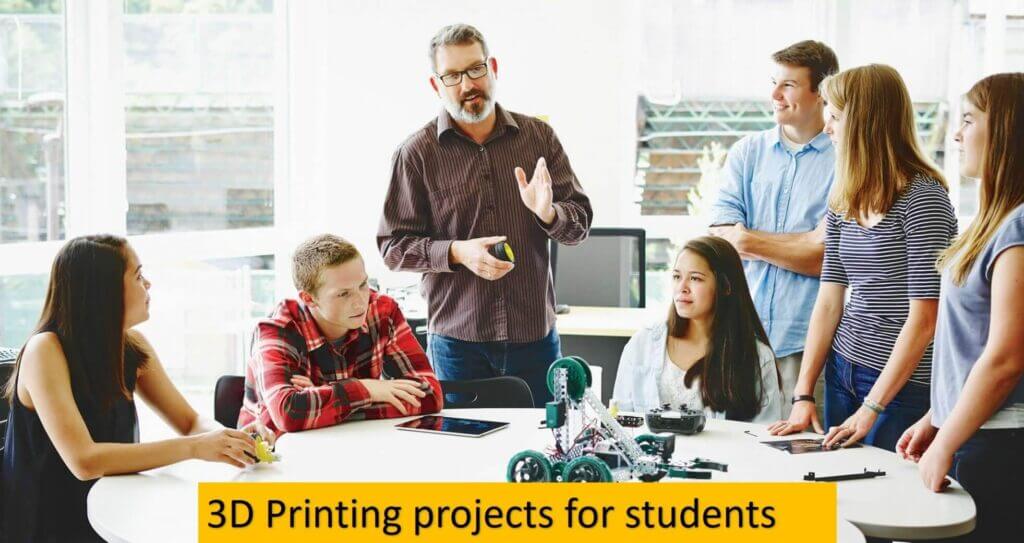Schools and colleges in both developed and developing countries leverage 3D printing technologies to empower and encourage students to use their critical thinking skills. There are many instances when students unleash their creativity and showcase their talent after getting opportunities to use 3D printers in developing countries.
In 2021, a class 10 student from Odisha surprised everyone by designing a robotic hand using a high-tech 3D printer. He further impressed many by gifting the 3D-printed robotic hand to a little amputee girl.
Likewise, a student from Kerala developed an inexpensive 3D printer while looking for inexpensive options to produce parts for his guitar. The innovative 3D printer supports a maximum print size of 120 centimeters (cm) x 83cm x 83cm.
Many educational institutions already help students reach their optimal learning potential by providing access to 3D printers. Educators promote critical thinking and foster innovation by planning various 3D printing projects for students.
But teachers can keep learners engaged only by focusing on keeping the 3D printing projects for students simple and engaging. Here are a slew of ideas that educational institutions and educators should consider while planning 3D printing projects for students.
11 Simple Ideas for 3D Printing Projects for Students
Braille Blocks
Students have heard of Braille as the tactile and printing system for visually impaired people. But most students are not familiar with Braille blocks used to guide the visually impaired safely. A teacher can impress and engage students by creating Braille blocks using 3D printers. She can encourage students to 3D-print various signage conveying messages in the Braille script.
Three-Dimensional Bar Charts
While learning statistics, students express a variety of information by creating bar charts. They represent a series of data by drawing bars of different sizes on graph paper. An educator can produce three-dimensional bar charts using a 3D printer. Also, she can create opportunities for students to display information by printing 3D bar charts instead of drawing bar charts.
Architectural Concepts
The internet enables students to learn about many historical and architectural concepts visually while learning history. In addition to reading textbooks, students see photos of historical monuments from various websites. Teachers can transform their learning experiences by 3D-printing some of the world’s famous historical and cultural monuments, like the Great Wall of China.
Personalized Name Plates
Educational institutions, like other organizations, identify employees through the placement of nameplates. An educator can make students familiar with the real-time usage of 3D printing by making them create personalized name plates for coworkers. The students can use a 3D printer to produce name plate holders. Subsequently, they can engrave names on the plate holders through laser engravings.
Art Projects
Often bloggers associate 3D printing technologies with science and engineering. But 3D printing creates opportunities for developing critical thinking skills for students studying humanities. A student can use a 3D printer to create a variety of products while learning humanities. Educators should plan 3D printing projects for arts and humanities students to create home decors, accessories, and gift items by combining their creativity and imagination.
Gift Items
Both school and college students look for new gift ideas. They further explore ways to find gifts that will be appreciated by the recipients. A student can create unique gifts for her friend using a 3D printer. She can create the gift item simply by choosing the appropriate digital file. The teacher should help the student to find and refine the digital file and convert the digital file into a unique gift item using the 3D printer.
Classroom Decoration
It is common for students to decorate classrooms during festivals and special events. Also, students explore ways to find decoration ideas that stand out from the crowd. The classroom decorations create opportunities for educators to make students familiar with 3D printing technology. A teacher can divide students into different groups and make each group produce specific decors using 3D printers.
Human Organs
One of the major use cases of 3D printing in the healthcare industry is the creation of living human tissues and cells. Educators cannot produce tissues and cells using desktop 3D printers. But they can promote interactive learning by 3D printing various human organs like a heart or a skull. Students will experience both excitement and thrill as they hold and observe 3D-printed human organs.
Dinosaur Communities
Students love to collect plastic dinosaurs of varying colors and sizes. But most students are not aware of the fact that dinosaur communities are separated by geological periods. Educators can use 3D printers to enable students to create their various dinosaurs. Also, they can make the project more interesting by dividing dinosaur communities into relevant categories according to geographies and periods.
Jigsaw Puzzles
Jigsaw puzzles are massively popular among students of varying age groups. Students love to form pictures by assembling mosaics and interlocked pieces accurately. Educators can keep multiple students engaged by making them 3D print multiple pieces. The 3D printing projects for students will hone critical thinking skills by making learners familiar with graphics, patterns, colors, and shapes.
Digital Modeling
The creation of digital models or virtual parts is a key part of the 3D printing process. 3D printers produce three-dimensional objects from digital files created using 3D modeling software. Educators can prepare students for 3D printing items on their own by making them familiarized with digital modeling. They can make students learn the digital modeling process and create digital 3D models using a slew of open-source and licensed software.
Conclusion
Schools and colleges have been adopting 3D printing technologies to develop future learning ecosystems. In addition to providing students with access to 3D printers, they are making teachers plan 3D printing projects for students. Hence, educators look for innovative 3D printing ideas that are simple and engaging.
But teachers can create opportunities for students to showcase their talent only by encouraging them to plan 3D printing projects. Also, they must help students to convert their ideas into solid three-dimensional objects using 3D printers. The mutual project planning will help students overcome common 3D printing challenges and adopt several 3D printing best practices.

